OK, so technically this ISN’T Barnwell County, but I had already posted parts 1 & 2, and this was on that some trip. We were on our way out of the county, so actually cover Allendale and the counties we crossed on our way home.
Alan and I had finished our lunch at Hogg Heaven, and the light sleet and snow had ended. Now it was just cloudy. We decided to check off a couple more items on our exploration list.
Our route took us east to the community of Snelling, where we turned south. Road traveled over rolling hills covered in pines, some ready for harvest, and some just planted. On Pattersons Mill Road we were driving along when we spotted an unusual church not on our list. We turned around to pay it a visit.
Pleasant Mountain Baptist Church was founded in 1872. The current building was constructed in 1915 in the Dunbarton area, now part of the Savannah River Plant. In 1952 the church was moved to its present location when SRP was built.
Services were discontinued in 1984, but special services are held on Fifth Sundays.
The thing that caught our eye was the unusual corner entrance. Other than that, the building itself is rather plain. Glazed windows prevented us from catching a glimpse of the inside. There was a white stone under a pine tree with the year of construction – 1915.
There was a small cemetery, but we didn’t take time to explore it. Knowing now that the graves were relocated, I kind of wish we had taken a look. There was more of a modern look to the graves, which is why we initially dismissed them. Plus, the day was getting away and we still had places to visit.
Next up on my list was the ghost town of Millett or Millettsville. I had been intrigued by the community on my last visit down to this area, and I wanted to pay it another. What’s left of the town is found along what was then the Port Royal and Augusta Railway. The town was named for Stephen Caldwell Millett, president of the Port Royal Railroad.
As early as 1864 the town of “Millettville” shows up on maps of the area. An 1895 map of Barnwell County shows the town as “Millett Sta. or Millettville P.O.”
The website Carolana.com indicates that the post office began in 1917, later than these maps would indicate. In 1951 it became known as just Millett. Carolana also indicates that the PO is still open, but the USPS website only shows the Martin post office south of here serving the area. Most residents of the area refer to this as the Millett-Martin community.
A 1928 Sanford Map of the town shows many more businesses, including the depot and two general stores.
When Alan and I paid a visit, it certainly didn’t look like the place could support a post office, or anything else, for that matter. There was the one old store I had spotted earlier, and the grain silos next to the railroad. Oddly enough, there was a trailer for an 18-wheeler with a refrigerator unit running loudly. Seemed a bit weird.
A dirt road runs parallel to the railroad on the other side. There was a gated farm with some discouraging signs. I didn’t really want to find out how good of a sniper Melvin really was.
Right next to this gate was a sign pointing toward Zion Grove Baptist Church. We drove down that way. The church looked to be in good shape, and almost looked like it was still in use. I couldn’t find any information about it online, though.
Finding additional information about Millett has also been challenging. I posted several links on my last visit, but I wanted to dig a bit further. There was once a Historic Millett website, but the domain name has lapsed. Fortunately, Archive.org and the Wayback Machine had some of the old material.
In 1952 a sophomore high school student from New York named Connie Black wrote a “study” of the town. She was visiting her grandparents, and had some unique perspectives on the town. The Savannah River Plant was under construction, and people were being forced to move from Ellenton, Dumbarton, and other communities on the site’s property. Millett was five miles south of the property, and spared the upheaval. Many in the town, including Connie Black, predicted boom times for the town as workers would be looking for lodging, etc.
Very little of interest happens in Millett; but recently the Savannah River Plant for the Hydrogen Bomb has taken over some two-hundred and fifty-thousand acres of land, the boundary of which is five miles from Millett. It has made quite a bit of excitement around the neighborhood and people from all over the United States – people working for the government – have been seeking rooms for rent in Millett. Soon many new houses will be built and Millett will thrive.
Alas, that was not to be. The SRP shut off access to the main route from Augusta down through Millett. The town was bypassed, and the larger towns of Barnwell and Allendale saw more traffic. Millett dried up and became a ghost town. Unlike the ghost towns of Ellenton and Dumbarton, this ghost town is still accessible, with remnants of the town visible.
I had even checked Chronicling America for references to the town. I didn’t find much, but there was this one item of interest from a “Yorkville” newspaper, the Yorkville Enquirer. The item showed up in several issues as a testimony for some quack cure-all called an Electropoise. It was quite amusing. I’m guessing that these quacks used a prominent name from a remote village in the same state to promote their product.
Alan and I continued on Millett Road until we came to its intersection with the oddly named Little Hell Road. The name supposedly refers to the difficulty of the approach to the river landing. Just off in the woods we could see Speedwell Methodist Church, so we headed in that direction.
The church was founded in 1885, and construction on the present building was begun in 1922. The building was left incomplete through the Depression, and was finally dedicated in 1941. Services were discontinued in 1970. Occasional services and homecomings are still held there.
Alan noticed that the front door wasn’t locked. We went inside. The interior had white pews, and walls painted in a mint green. There were two pianos up front. Behind the pulpit was a rather high choir loft.
On either side of the church were Sunday School rooms. These had large doors that opened onto the main sanctuary, so the space could be used for overflow seating.
There was no heating or AC that I could see, but electric fans lined the walls in between the windows.
The interior looked much better than lots of the disused churches Alan and I have visited. However, there were still some big problems. Paint was peeling from the ceiling, as if there might be leaks in the roof. There was some rot in the flooring. One of the Sunday School rooms had a “Do Not Enter” sign because parts of the floor had rotted away.
Here are a couple more detail shots of the interior:
Back outside we explored the cemetery.
It was a typical country church cemetery with a mix of stones. There were a couple of unusual items. There was one grave with a stone horse’s head, surrounded by plastic flowers.
There was another with fencing and an unusual low shed-like structure.
I took a couple more shots of the rear of the church.
As we were leaving a truck with a man and two young girls pulled. They have relatives buried in the church, and were there to do some maintenance.
Alan and I followed Millett Road to the main highway and turned north. We were about to enter the Savannah River Plant property. It was getting on in the afternoon, and with cloudy skies and endless miles, I was battling drowsiness. We made it through the property, and I took Alan on a brief detour through the little town of Jackson on the north end of the plant.
At this point I’d set my GPS on a direct route back to Alan’s house. We followed it through North Augusta, and past the mansions built by Irish Travelers on the north end of town. Our route took us through farmland, and eventually we found ourselves in the town of Johnston. When I saw that we were so close to Ward, I decided we needed to check out Spann Methodist Church. I have visited it many times, but Alan had never seen it. We headed that way.
There were some workers painting the church, so we didn’t approach the church, but explored the cemetery. The cemetery is unique with its statuary of the town’s founder, Clinton Ward, and the hart guarding the gates of the Ward-Satcher family plot.
I shied away from the obvious statuary. I had taken many photos of them on previous trips. However, there were a couple of things that caught my eye. I noticed a statue and small grave outside of the fencing for the cemetery, next to the railroad. I wondered what this individual had done to be excluded. Turns out, it was an elaborate grave for a dog named “Bubba.”
I had noticed that there were lots of Woodmen of the World markers in this cemetery. However, there was one more outlier. The most elaborate WoW marker was also outside the fencing of the cemetery.
I went back to the car and got some coffee to try to stay away on the drive back, while Alan explored the cemetery further. I did take a few more shots.
From Spann we headed pretty much straight back to Alan’s house. It had been a great day of exploring.
One final note: As I’m typing this a week later, I’m sitting here with one of the worst coughs and colds I’ve had in years. So much for drinking from the Healing Springs at God’s Acre.

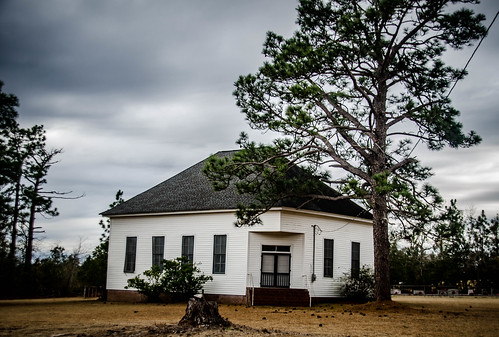







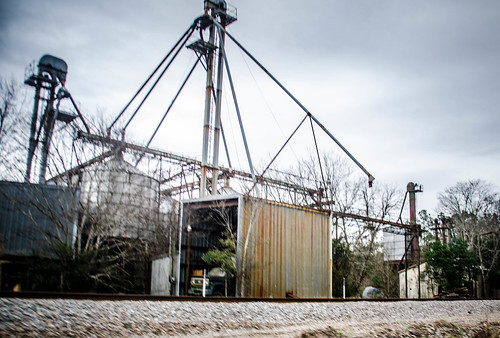
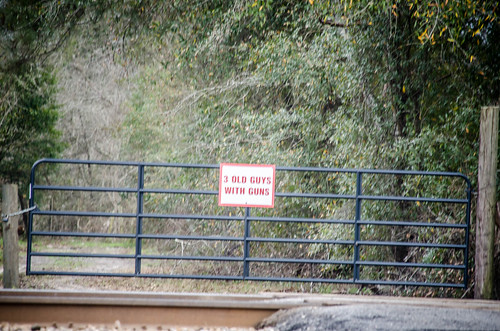





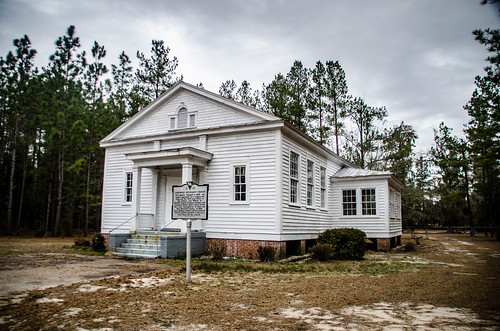















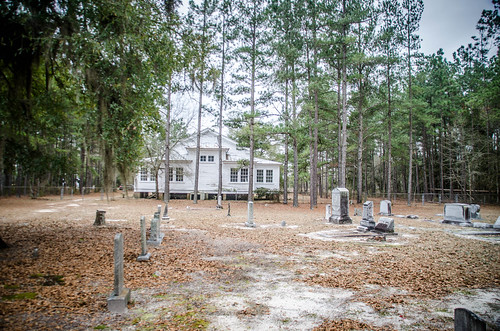


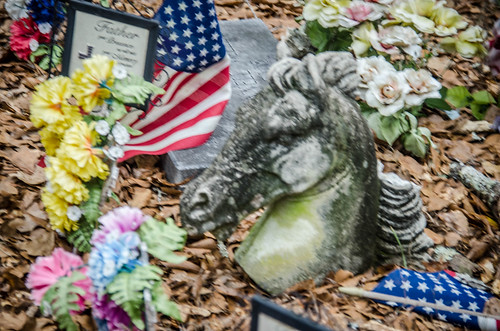
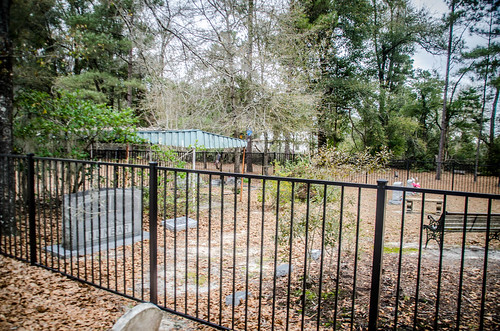




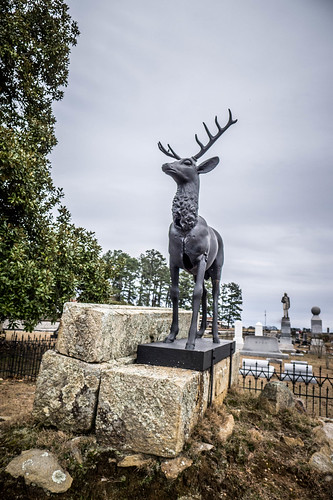














It was a great day of exploring! We should go back to Barnwell on a day with more sun and less cold.
I swear we have drive many of the same roads… This is a very interesting little corner of the state. I have been to Millett and Martin, but my favorite thing in the area is the walkway on the old 301 bridge. Of course the history of SRS is intriguing as well.